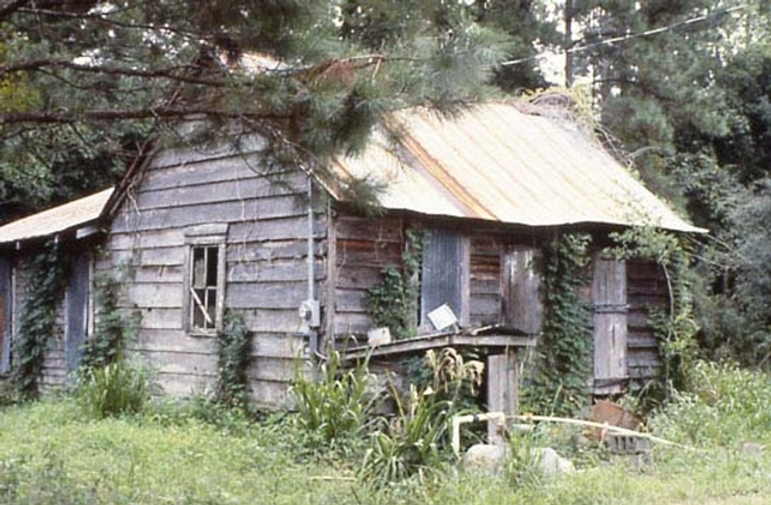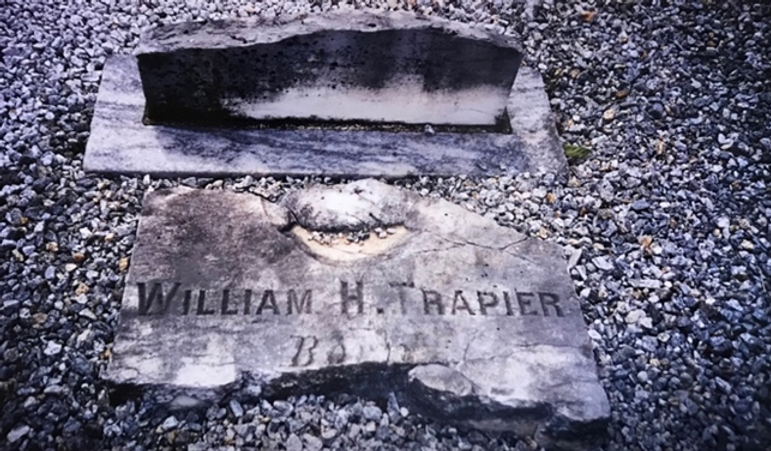Content warning: slavery
Every year, on the 1st of June, Mint Julep Day rolls around at New College, Oxford. In a garden hedged by the medieval city wall, members of the college gather to drink a curious concoction of bourbon, brandy and mint. The Mint Julep isn’t many people’s favourite cocktail – but it is free. Why? Because of a nineteenth-century endowment left to the college by William Heyward Trapier of Windsor Plantation, Georgetown County, South Carolina.

For the most part, William Trapier was a man who lived in relative obscurity. Yet, when he travelled across the Atlantic to Oxford in June 1845, he began a tradition that has lasted (albeit with some lapses) to the present day. According to the legend, Trapier, on the evening of the 1st of June, found himself dining with the Junior Fellows in New College Hall. When he was asked what he would like to refresh himself with, he confidently requested the classic beverage of the American South: “a Mint Julep”. However, he was met with blank faces. To his horror, neither his hosts nor the servers had ever heard of such a drink. Intent on putting this to rights, Trapier set about making the mint julep for himself – and announced his plan that New College should never again suffer a lack of this drink.
Departing from Oxford and well pleased with the visit he had enjoyed, Trapier left behind a sum of money intended to pay for a free mint julep for everyone dining in Hall, each year on the anniversary of his visit. Accounts differ on whether the exact, original recipe was ever written down, or simply passed through word of mouth.[1] He also requested that a place be set for him on this night each year in the Hall of New College. Despite promises to return to Oxford someday, Trapier faded back into obscurity in Walhalla, South Carolina, where he died in 1872. Nonetheless, in keeping with his wishes, Mint Juleps continue to be served at New College every 1st of June.
Trapier’s legacy is material, too. The money he left to New College also funded the creation of a silver cup, intricately decorated with vine leaves and flowers and a Latin inscription, to be used in the Mint Julep ceremony. More than a century later, in 1956, New College Fellow David Ogg, struck by the Trapier legend, gifted the University of South Carolina a similar commemorative cup, engraved instead with the coat of arms of New College, the coat of arms of the University of Oxford, and an inscription detailing the events of Trapier’s visit all those years ago.[2] Both cups still exist today on each side of the Atlantic: the Trapier Cup remains in the plate collections of New College, whilst its twin resides in the McKissick Library of South Carolina. Together, they are material evidence of Oxford’s longstanding global links.
In fact, legacies like this litter Oxford. Across the 1600s and 1700s, the most common international students at Oxford University were South Carolinians, as it became increasingly popular for wealthy planters to send their sons overseas for their education. It was also traditional for graduating students to leave behind a gift to their college – most often a silver cup or platter. As such, much of the material wealth which resides in the treasuries and archives of Oxford’s colleges today remains intrinsically tied up with the historical profits of slavery.

William Heyward Trapier was no exception: the endowment and the cup he left behind came from tainted money. Windsor Plantation had been purchased by his grandfather, Paul Trapier, in 1761. Like his grandfather and father before him, William Trapier reaped great profits off slave labour on this rice plantation.[3] The numbers of slaves held in bondage at Windsor are not well recorded. Yet, better records exist for Keithfield Plantation, which was owned by James Heyward Trapier, a member of the same Black River rice-planting family as William.[4] In 1860, for example, Keithfield produced 315,000 lbs of rice with 81 slaves.[5] This gives us an idea of the scale of both capital gain and slave labour on the Trapier plantations.
When he visited Oxford in 1845, the “peculiar institution”[6] in which Trapier had made his money was just two decades from being abolished, with a bloody Civil War yet to come. In this war, Windsor was to be raided by Union soldiers, and in the Spring of 1866, post-war uprisings all over Georgetown County rice plantations saw freedmen leave their work and challenge plantation managers with such means and tools as were available to them.[7] In this volatile postbellum context, Windsor was eventually sold on by the Trapiers.
Almost exactly a century after Trapier’s visit to Oxford, The Keowee Courier updated its South Carolinian readers on this legendary link: ‘it is said that as the years have rolled by, Julep Day at New College has fixed itself firmly in the catalogue of Oxford traditions’.[8] Indeed, in 2022, Mint Julep Day shows no signs of going anywhere.

Written by Amelia Hart
References
[1] Some accounts suggest Trapier left a handwritten copy of the recipe with New College upon his departure (David Ogg, ‘New College, Oxford, and South Carolina: A Personal Link’, South Carolina Historical Magazine, 59/2 (April, 1958)), however the New College Archives has no record of this, and suggest it was in fact never written down, but communicated through word of mouth.
[2] David Ogg, ‘New College, Oxford, and South Carolina: A Personal Link’, South Carolina Historical Magazine, 59/2 (April, 1958)
[3] William Heyward Trapier’s father was called Benjamin Foissen Trapier. Benjamin Foissen Trapier inherited Windsor from Paul Trapier in 1793.
[4] Records show that James Heyward Trapier later served as a Confederate Brigadier in the Civil War.
[5] http://www.nationalregister.sc.gov/georgetown/S10817722023/ . It is also interesting to note that rice continued to be planted at Keithfield until c.1920 with black South Carolinians renting small areas of the plantation and selling their rice to Georgetown merchants.
[6] Southern slavery was first referred to as the “peculiar institution” by pro-slavery politician John C. Calhoun, from South Carolina, in 1830.
[7] https://south-carolina-plantations.com/georgetown/keithfield.html#1; http://www.nationalregister.sc.gov/georgetown/S10817722023/S10817722023.pdf
[8] Newspaper article entitled ‘William Heyward Trapier: Mint Julep Introduced at Oxford by Walhalla Man’ subtitled ‘Julep Festival Held At English College on June 1 Each Year’, by R. T. Jaynes, published in The Keowee Courier, Walhalla, S.C., dated Thursday May 13, 1943





